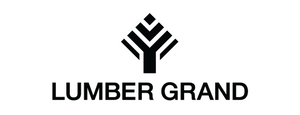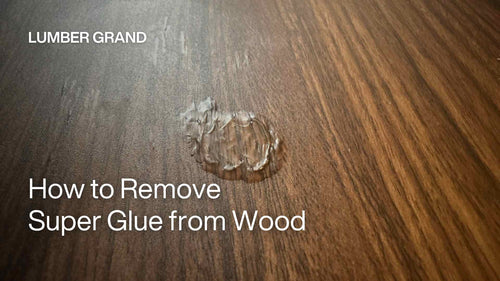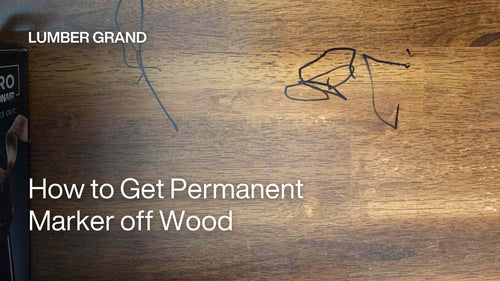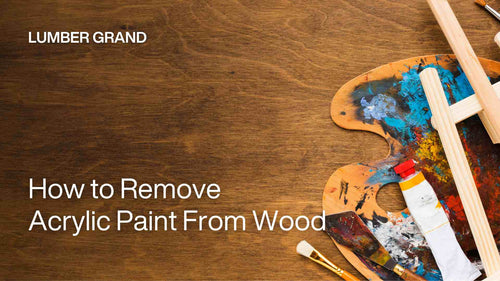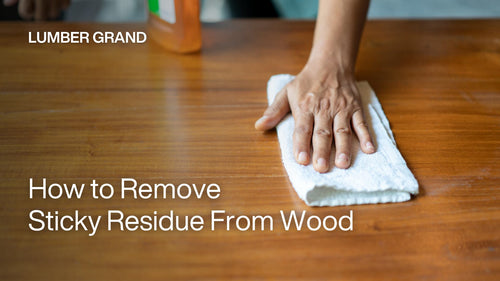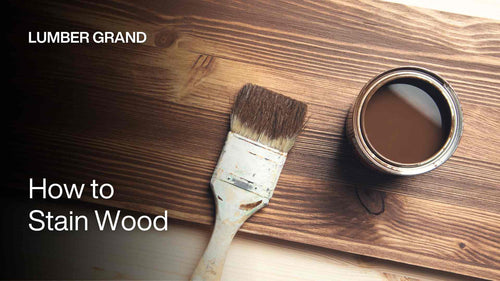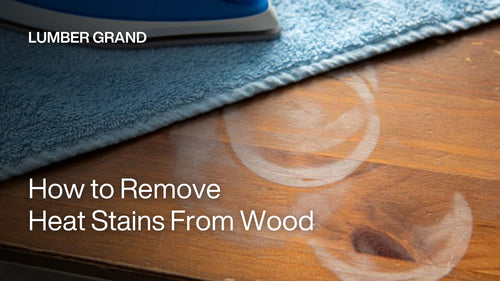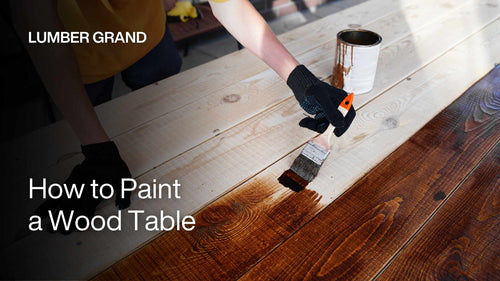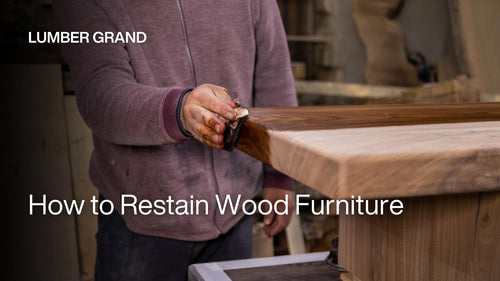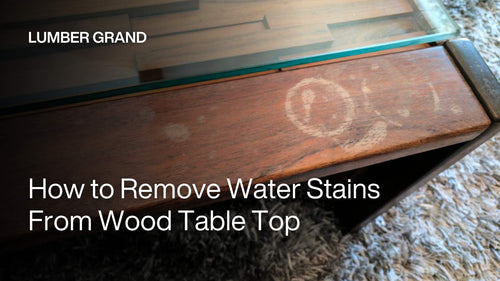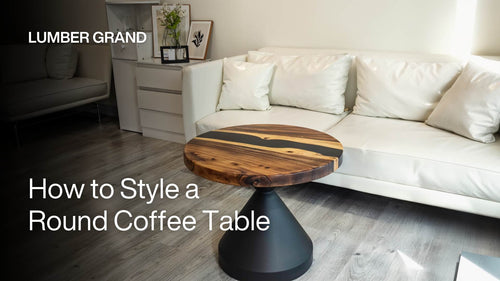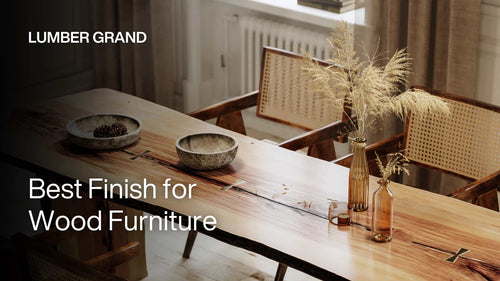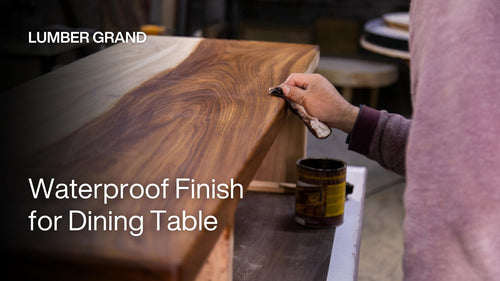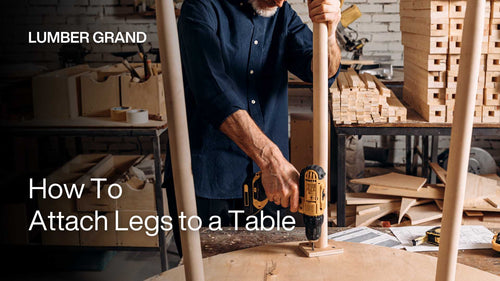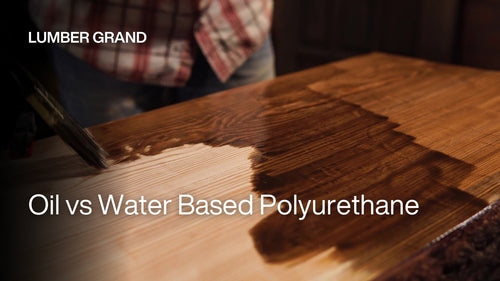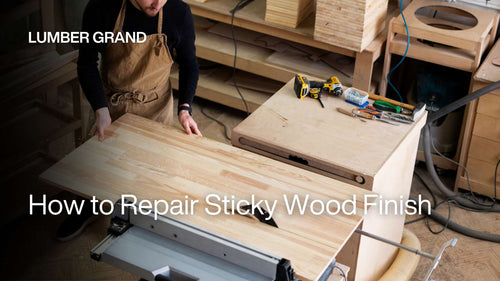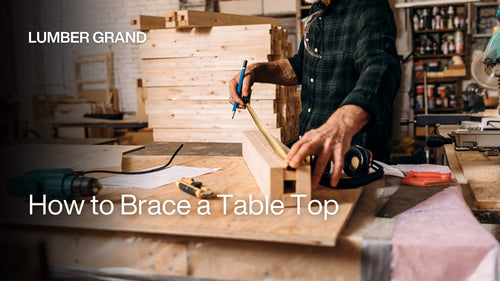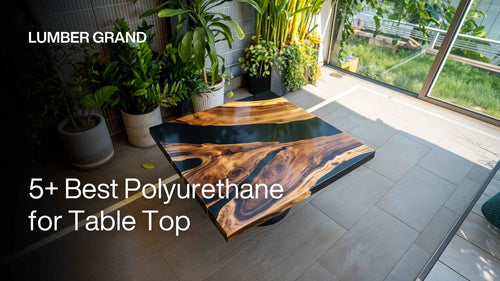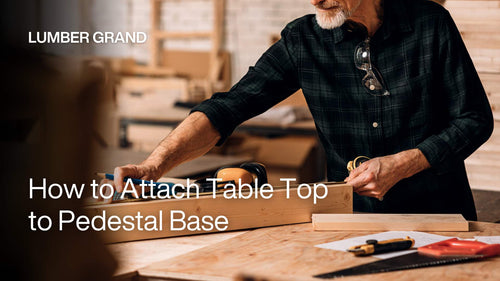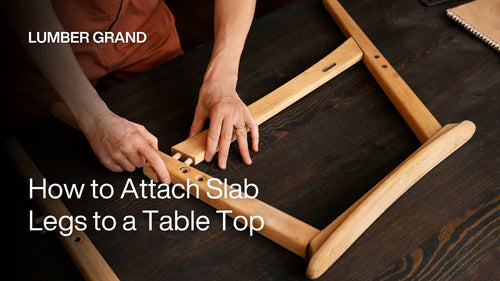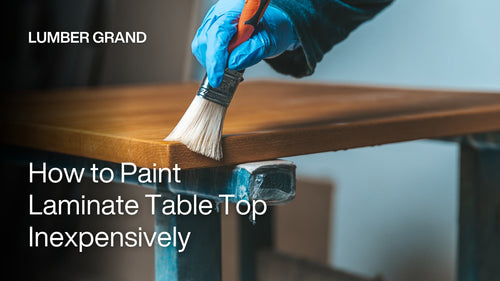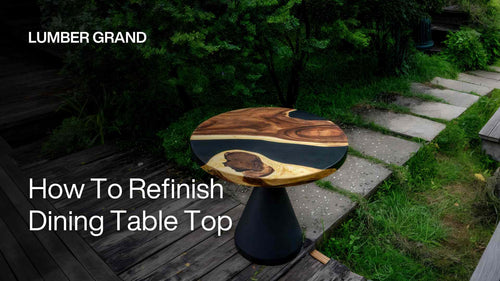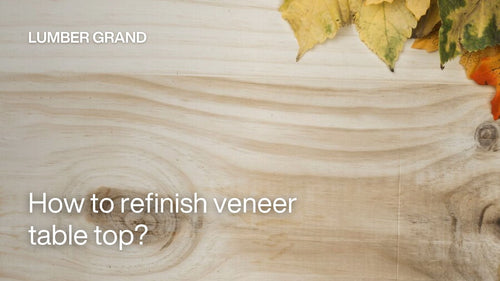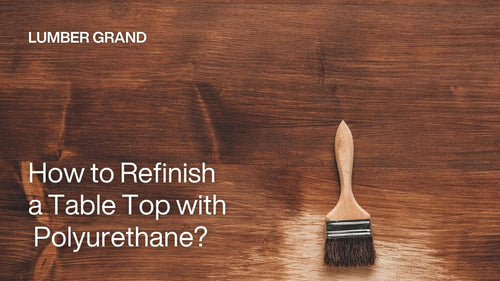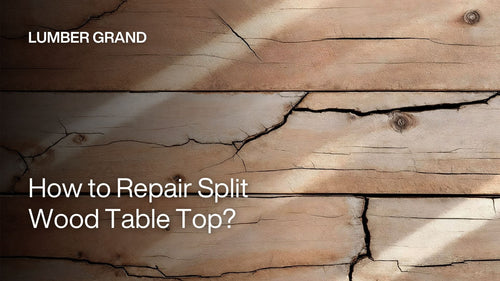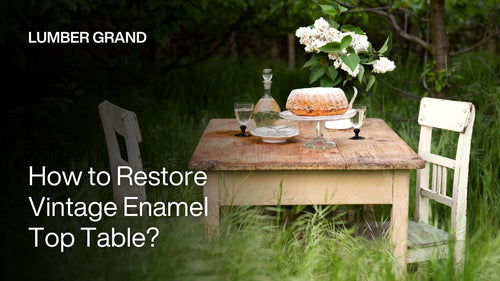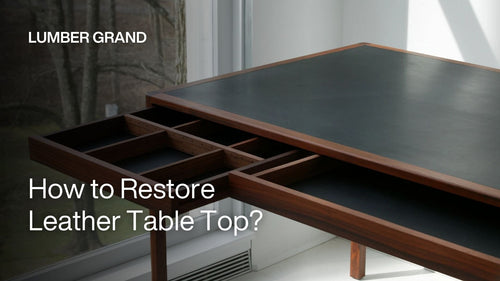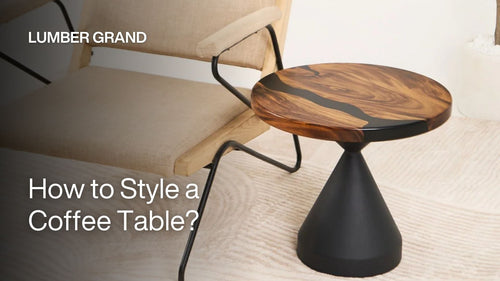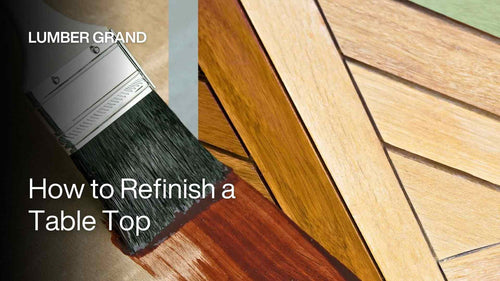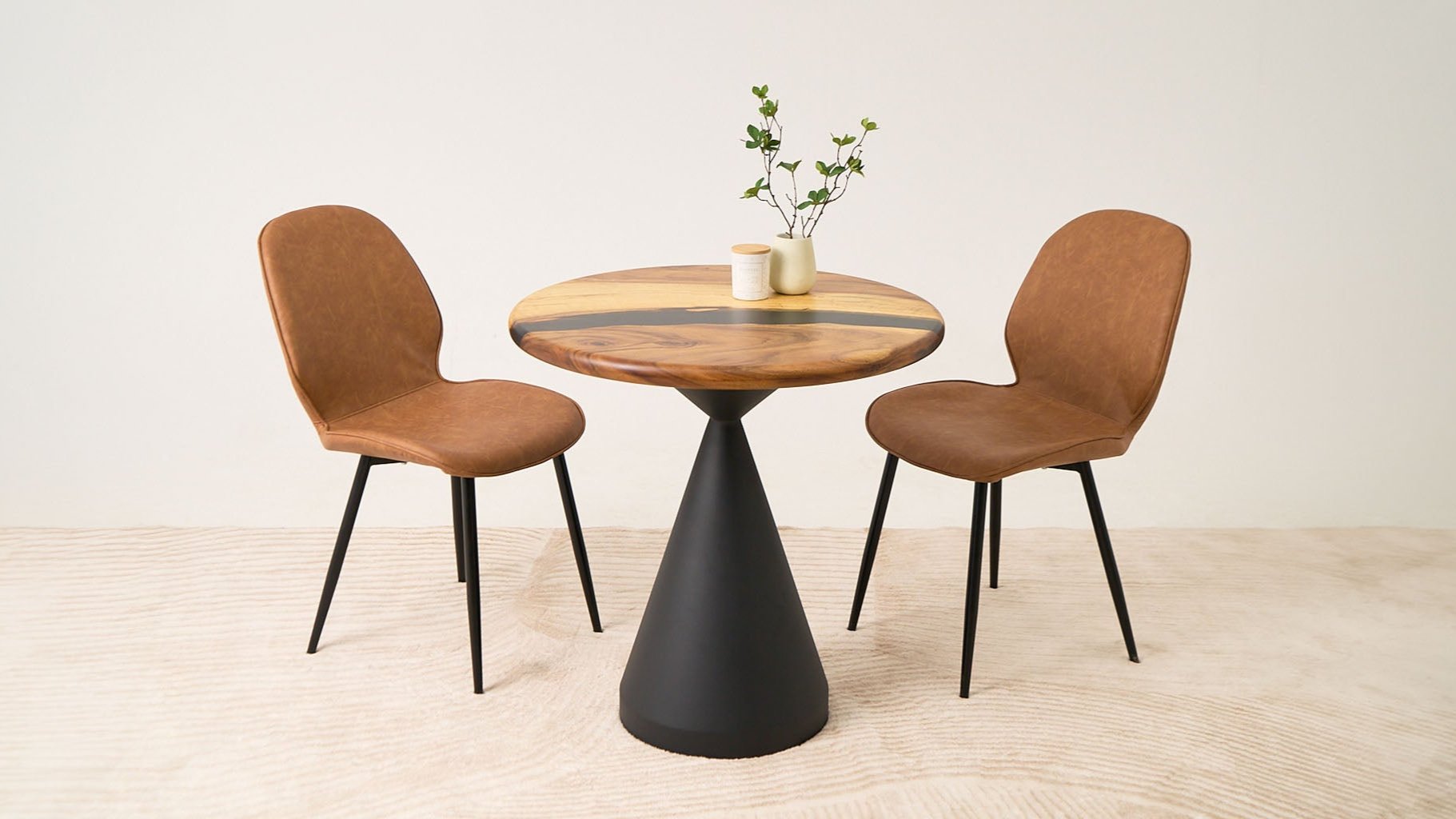How to remove sticky residue from wood doesn't have to be a battle. Sticky residue from wood can be one of those inadvertently maddening problems. Maybe you used an old tape on a recent project, or accidentally spilled some glue during a do-it-yourself task. You don’t need harsh chemicals, expensive tools, or professional help to fix it.
Lumber Grand will walk you through 7 powerful DIY methods to safely eliminate sticky residue on wood surfaces. Every step ranges from light solutions for delicate finishes to heavy-duty ways for the most stubborn messes. Continue reading to choose the optimal how to remove sticky residue from wood floor, table, desk,... and restore the natural beauty!
What Causes Sticky Residue on Wood
Before learning how to remove those sticky residues, glue, tape, etc, from wood, we’d like to help you understand what you're dealing with. Sticky residue typically comes from:
-
Finish breakdown: Finishes such as varnish and lacquer can break down due to heat, then cause the surface to become sticky. Or a finish that doesn't dry properly can also leave sticky residue on the wood.
-
Adhesive tape and stickers: When you peel off a sticker, label, or tape, glue is typically left on the wood table top.
-
Spill substances: Candle wax, vegetable oil, mineral oil, or other liquid adhesives can penetrate the wood grain and create sticky marks.
-
DIY materials: Glue, epoxy, resin, or do-it-yourself materials that fall from the wood will dry up and leave a sticky residue.
-
Furniture polish: Using some types of furniture polish, especially those containing wax or oil, can build up on the surface and become sticky.

How to remove sticky residue from wood veneer
Photo: Mother Daughter Projects
Latest blog this week: How to Remove Paint from Wood
How to Remove Sticky Residue from Wood: Quick Reference Table
Here’s a quick summary of 7 ways to remove sticky residue from wood for you if you’re short on time. You can pick the method that works best for you, then scroll down for the full step-by-step guide.
| Your Sticky Wood | Best Method | Strength | Special Notes |
|---|---|---|---|
| Fresh stickers or light glue | Hair Dryer | Gentle | Safe for all finishes |
| Finished wood surfaces with light buildup | Soap Cleaning | Gentle | Use properly diluted |
| Sealed or varnished wood | Vinegar + Water | Mild | Test first on delicate finishes |
| Finished wood or delicate surfaces | Oil-Based Solutions | Mild to moderate | Clean with soap after |
| Heavy sticky residue | Commercial Removers (Goo Gone/WD-40) |
Moderate | Finished wood ONLY, clean thoroughly after |
| Unfinished or durable natural wood table | Rubbing Alcohol/Mineral Spirits | Strong | Should test first, as it may affect some finishes |
| Unfinished or unpainted wood only | Acetone | Very strong | It strips finishes. Use only when necessary |
7 Methods of How to Remove Sticky Residue from Wood: Step-by-Step Guide
It's annoying to have or notice sticky residue on a natural wood table, isn't it? No more worries, Lumber Grand reveals 7 easy home steps to help you get rid of those pesky marks once and for all.
1. Hair Dryer — Safest for Delicate Wood Finishes
The safest and most gentle way to get sticker residue off is by using a hair dryer. It also loosens stubborn tape or stickers to remove them from a wooden table top.
What you'll need:
-
Hair dryer
-
Plastic card (old credit card or gift card)
-
Soft cloth
Here’s a step-by-step guide:
-
Step 1: Turn on the hair dryer and set it to the lowest or medium heat setting
-
Step 2: Hold the dryer about 2 — 3 inches away from the wood surface and warm the sticky area for 30 to 60 seconds.
-
Step 3: Once you feel the surface is warm and the adhesive has softened, gently use the card to scrape off the residue. For how to remove stickers from wood, you just need to remove the sticker with your hands.
-
Step 4: If some sticky residue remains and won’t come off completely, you can move on to the following method.

How to remove sticky residue from wood furniture with a hair dryer
Photo: Ujina P.
Read more: Best Finish for Wood Furniture
2. Soap Cleaning — Best for Light Buildup on Finished Wood
The second method you can employ is with a mild cleaner, such as Murphy's Oil Soap or Dawn dish soap. This is an effective how to remove sticky residue from wood veneer because it doesn’t affect the surface.
What you'll need:
-
Murphy's Oil Soap or Dawn dish soap
-
Warm water (1 cup)
-
Microfiber cloth or soft sponge
-
Dry towel
Easy steps are:
-
Step 1: We mix one tablespoon of Murphy's Oil Soap or dish soap into one cup of warm water.
-
Step 2: Wet the microfiber cloth in the solution and ring it out so it is damp, but not dripping
-
Step 3: Rub the adhesive side in small circles or with the grain of the wood
-
Step 4: Wipe the surface dry with a cloth once all of the tacky stuff is removed
-
Step 5: Test to determine if tackiness is still present. If it is, you can try the step again.

How to remove sticky residue from wood floor
Photo: GeniusRocket
You might like: How to Remove Heat Stains from Wood
3. Vinegar + Water — Natural Solution for Sealed Surfaces
One of the simplest and most effective homemade cleaners is a diluted vinegar-water solution. And it is a miracle worker on how to get rid of sticky residue on a natural wood table.
What you'll need:
-
White vinegar
-
Warm water
-
Two soft cloths
-
Small bowl
Do this simple how-to:
-
Step 1: Mix white vinegar with warm water in a 1:3 ratio
-
Step 2: Wet a soft cloth in the solution and start working in small sections of the surface
-
Step 3: Rub gently with the fabric on the adhesive areas until the residue is eliminated
-
Step 4: Remove any excess solution with a second clean, damp cloth (with just water)
-
Step 5: Dry the surface thoroughly and ensure that all of the residue is eliminated
If the first three methods for how to get tape residue off wood methods were too gentle and didn’t quite do the job, don’t worry. We’ve got some stronger methods coming up next.

How to remove sticky residue from wood table top
Photo: WikiHow
4. Oil-Based Solutions — Dissolves While Polishing
Oil loosens the adhesive and gently polishes the surface at the same time. The how to remove sticky residue from wood cabinet technique is harmless and appropriate for finished wood surfaces. You don't need to fear destroying the protective layer.
What you'll need:
-
Vegetable oil, mineral oil, olive oil, or even mayonnaise
-
Soft cloth or paper towel
-
Plastic scraper (optional)
-
Mild dish soap for cleanup
This is what to do step by step:
-
Step 1: Place a small amount of your chosen oil-based substance directly on the adhesive residue
-
Step 2: Let it sit for about 10 — 15 minutes to break and dissolve the adhesive
-
Step 3: Gently rub with a soft cloth. If the residue is hard and thick, use an old credit card or a plastic scraper to scrape off the residue carefully.
-
Step 4: Use a damp cloth in a mild soap solution to clean the area to remove any remaining oil
-
Step 5: Allow the surface to dry completely. If you still notice an oily residue afterward, wipe it with a damp cloth and mineral spirits.

How to remove glue from wood with olive oil
Photo: Freepik
5. Commercial Removers — Heavy-Duty for Stubborn Adhesive
If the gentler methods above aren't cutting it, commercial cleaners like Goo Gone or WD-40 can handle tougher adhesives. These are what you reach for when the stubborn stuff just won't budge.
Most importantly, Goo Gone is ONLY safe for finished wood. And WD-40 is oil-based, so you should clean it off thoroughly with soap and water, especially if you plan to paint or refinish the surface later.
What you'll need:
-
Goo Gone or WD-40
-
Lint-free microfiber cloth
-
Mineral spirits or soap solution
-
Protective gloves (optional)
Follow these steps:
-
Step 1: You should test initially on a small, out-of-the-way area to ensure the solution won't harm the finish on the wood.
-
Step 2: Then, apply a small amount of Goo Gone or WD-40 directly onto the sticky residue
-
Step 3: Allow to sit for about 2 — 5 minutes, which gives the solution time to penetrate and break down the adhesive
-
Step 4: Next, wipe off with a clean cloth. We recommend using a lint-free microfiber cloth because a tissue will leave paper crumbs.
-
Step 5: Use a cloth dampened in warm, soapy water to remove oil residue left on the table if you use WD-40
-
Step 6: Finally, use a dry cloth to clean the entire table

WD-40 to remove adhesive from wood
Photo: Clean That Up
6. Rubbing Alcohol/Mineral Spirits — Ideal for Deep Residue
You can use mineral spirits or rubbing alcohol to treat deeper residues. The removing sticky residue from wood method is for untreated wood only, and you must first test on a small spot.
What you'll need:
-
70% or 91% rubbing alcohol OR mineral spirits
-
Cotton balls or a soft cloth
-
Plastic scraper
-
A clean, damp cloth
The method is straightforward as follows:
-
Step 1: Rub alcohol or mineral spirits on a cloth or a cotton ball. Don't rub directly on the surface of the wood since this will destroy the surface.
-
Step 2: Lay the wet cloth/cotton ball on the stain for about 1 minute to dissolve
-
Step 3: Then, rub off the stain gently. Rub in circular motions or along the grain of the wood. If the stain is heavy, scrape it off the surface with a plastic scraper.
-
Step 4: Finally, clean the whole table using a damp cloth and dry it properly

How to remove sticky residue from wood without scratching
Photo: Hollywood Adventures
Read more: How to Repair Sticky Wood Finish
7. Acetone — Last Resort for Bare Wood Only
Acetone is a strong, harsh solvent. Therefore, you should only use it as a last resort when all other methods have failed. Please note that acetone will damage and strip most wood table finishes, including lacquer, varnish, and polyurethane. We advise you to use this method with extreme caution.
What you'll need:
-
100% acetone (nail polish remover)
-
Cotton cloth or cotton balls
-
Plastic scraper
-
A clean, damp cloth
-
Protective gloves
Follow these steps:
-
Step 1: You must test the acetone in a small, hidden spot to ensure that it doesn’t affect the wood surface
-
Step 2: Then, soak the acetone in a cloth and rub it gently on the sticky residue
-
Step 3: Once the acetone loosens up the sticky residue, you can use a plastic scraper or a plastic card to push the sticky residue from the surface slowly
-
Step 4: Wipe it with a damp cloth. You would do them alternately, cleaning with the acetone first and then cleaning it with a wet cloth again. This will minimize the impact of acetone on the wood the most.
-
Step 5: After that, check for any remaining sticky substance and dry the table

How to remove sticky residue from wood table with acetone
Photo: Mother Daughter Projects DIY
6 Simple Ways to Protect Your Wood & How to Avoid Sticky
No one likes to see sticky residue on their favorite wooden table. Now that you know how do i remove sticky residue from wood, here are some tips to avoid it in the first place.
-
Choose the correct type of tape: You should choose tape that is easy to remove and does not leave too much glue. Mainly when used on finished wood surfaces.
-
Avoid leaving the tape on too long: The longer you leave it on, the more the glue will stick and become harder to remove. If you only need to apply the tape temporarily, you should remove it within 24 — 48 hours.
-
Clean spills immediately: If you accidentally spill glue or liquid on your wooden table, deal with it immediately. This will help limit stains or sticky marks later.
-
Clean the table regularly: Use a damp cloth soaked in diluted soap to clean the table surface gently. You should clean the table every 2 weeks to ensure it is always clean. Regular cleaning also helps you deal with sticky residue more quickly than leaving it on too long.
-
Avoid sunlight and high temperatures: High temperatures can cause the glue in the sticker to melt and stick to the wood surface. Avoid sticking stickers in areas with high temperatures and direct sunlight.
-
Check the finish: A worn or old finish can cause your furniture to stick. So check the finish every 6 months and re-polish if necessary.

Clean the table regularly to avoid sticky residue
Credit: Lumber Grand
Shop now: RANDOM RECTANGLE COFFEE TABLE - Complete Sets, Natural Wood Grain
FAQs
1. What Removes Sticky Adhesive from Wood?
Here are some effective ways to remove sticky adhesive from wood:
-
Heat: Use a hair dryer to apply heat to the glue
-
Home remedies: Murphy's Oil Soap, Dawn dish soap, vinegar + water
-
Oil-based solutions: Vegetable oil, mineral oil, mayonnaise, or olive oil
-
Stronger methods: Rubbing alcohol, mineral spirits, acetone, or commercial removers (Goo Gone, WD-40)
-
Last resort: Acetone (Note: it’ll strip most finishes)
2. Does Rubbing Alcohol Remove Sticky Residue from Wood?
Yes, rubbing alcohol can effectively remove sticky residue from wood. You can put rubbing alcohol on a cloth or a cotton ball. Then place the cloth/cotton ball over the stain for a few minutes. Then rub it lightly and wipe it clean with a damp cloth.
Note: Don't put rubbing alcohol directly onto the wood surface
3. How Do You Remove Gummy Buildup from Wood Furniture?
You can try diluted Murphy's Oil Soap or vinegar diluted with water to remove gummy buildup. If that doesn't work, you can try stronger methods like rubbing alcohol, mineral spirits, or acetone. However, test it in a small, inconspicuous area and use it carefully to avoid damaging the wood surface.
4. Is Goo Gone Safe on Wood?
Yes, Goo Gone is safe for finished and sealed wood. So, you shouldn't use it on unfinished, raw, or unsealed wood. Therefore, you should test Goo Gone in an inconspicuous area before applying it to a large area. And don't forget to wipe clean with a cloth and diluted soap after use.
Need more wood care tips? Check out How to Clean a Wood Table that is Sticky
How to Remove Sticky Residue from Wood: Guide Ends Here
Although sticky residue can be bothersome, it is easy to remove. Now, you have the answer for how do i remove sticky residue from wood. Try one of the following methods to remove this residue:
-
Use a hair dryer
-
Apply a soap cleaning solution (Murphy's Oil Soap or Dawn dish soap)
-
Wipe with vinegar and water
-
Use oil-based solutions (vegetable oil, mineral oil, or mayonnaise)
-
Apply commercial removers (Goo Gone or WD-40 on finished wood only)
-
Wipe with rubbing alcohol/mineral spirits
-
Use acetone (very strong)
Our tip on how to remove sticky residue from wood is to start with the gentlest method and move up only if needed. This helps protect your wood’s natural finish while restoring its smooth touch. And don’t forget to check out our helpful blogs for more great interior tips. Thanks for reading!
